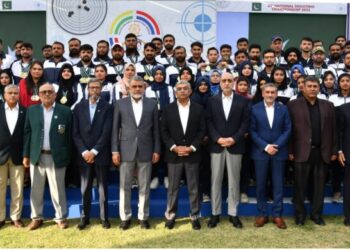![]() Follow Us on Google News
Follow Us on Google News
Raja Ranjit Singh, popularly known as Sher-e-Punjab or “Lion of Punjab”, was the first Maharaja of the Sikh Empire, which ruled the northwest Indian subcontinent in the early half of the 19th century.
He was born in a Jat Sikh family of Warraich clan on 13 November 1780 to Maha Singh and Raj Kaur in Gujranwala, Punjab region (present-day Punjab, Pakistan). His mother Raj Kaur was the daughter of Jat Sikh Raja Gajpat Singh of Jind.
As a legendary figure in South Asian history, he was a warrior, statesman, and visionary who rose from humble beginnings to become the founder and ruler of the formidable Sikh Empire. Renowned for his military prowess, strategic acumen, and unwavering determination, he earned the epithet of the “One-Eyed King” due to the loss of his left eye during a childhood accident.
Early Life:
Ranjit Singh was born on November 13, 1780, in the city of gujranwala (now in Pakistan) to Maha Singh and Raj Kaur. His father was the leader of the Sukerchakia Misl, one of the many Sikh Confederacies that held sway in the Punjab region at that time. Tragedy struck at the tender age of 7 when a horse-kicking accident left him blind in one eye, leading to his nickname “One-Eyed Lion.” He is called the lion of Punjab.
Leader of Misl:
Following the death of his father in 1792, Ranjit Singh assumed leadership of the Sukerchakia Misl at the young age of 12. Displaying exceptional leadership qualities from an early age, he swiftly consolidated power and expanded his territories, defeating rival misls and establishing himself as a prominent Sikh leader
War Against Ahmad Shah Durrani:
In 1799, at the age of 18, Ranjit Singh led a daring campaign to capture Lahore, which was under the control of the Afghan ruler, Ahmad Shah Durrani. Despite facing overwhelming odds, the young and ambitious warrior prevailed, capturing the city and proclaiming himself as the Maharaja of Punjab
Golden Temple:
Maharaja Ranjit Singh was a devout Sikh who sought the blessings of the Harmandir Sahib (Golden Temple) in Amritsar, the holiest shrine for Sikhs. His rule was marked by a strong sense of religious tolerance, and he actively contributed to the beautification of the temple, adorning its domes with gold, which earned it the moniker “Golden Temple.” He had pledged the Kohinoor as a donation at the Lord Jagannath temple at Puri, Odisha, as his last wish
Governance of Ranjith Singh
He did not discriminate against people on the basis of religion, race or caste. In fact, he had people from all religions in his army. Moreover he employed a few Europeans in his court. He generally kept himself away from the British as he was aware about the modus operandi of British in other kingdoms of the Indian subcontinent. However, he still maintained a diplomatic channel with the British to avoid any communication gaps.
Treaty of Amritsar:
With his growing empire and ambitions to expand further, Maharaja Ranjit Singh engaged in diplomatic relations with the British East India Company. The Treaty of Amritsar in 1809 solidified friendly relations between the two powers, setting the stage for a relatively stable northwestern frontier for the Sikh Empire.
Lahore Durbar:
Ranjit Singh’s capital at Lahore became a vibrant center of culture, art, and learning. The Lahore Durbar, or royal court, attracted intellectuals, poets, and artists, contributing to a cultural renaissance that celebrated Sikh heritage and encouraged interfaith harmony
Conquest of Kashmir:
One of Maharaja Ranjit Singh’s significant military achievements was the conquest of Kashmir in 1819. His forces defeated the Afghan governor, and the region became part of the expanding Sikh Empire, ensuring greater control over the northwestern territories.
Death:
After nearly four decades of remarkable rule, Maharaja Ranjit Singh passed away on June 27, 1839, leaving a vast empire to his successors. His death marked the beginning of internal strife and conflicts among various factions, eventually leading to the gradual decline of the Sikh Empire.
































